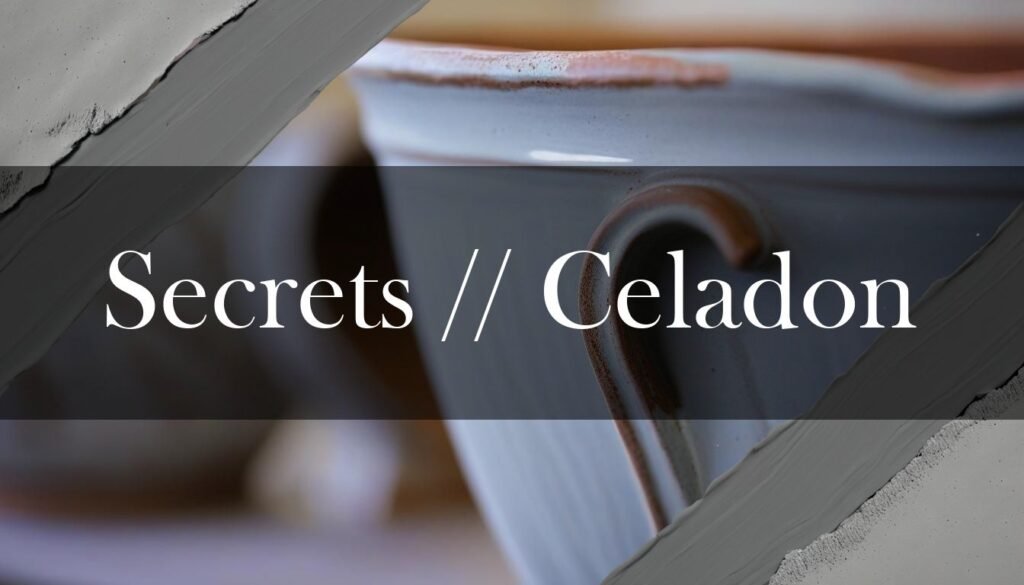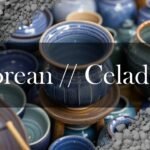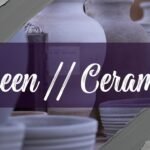Celadon glazes, with their enchanting translucent, jade-like appearance, have captivated potters for centuries. Achieving that serene green hue involves a delicate dance of specific materials, each playing a vital role in the final glaze. Silica (SiO₂), the primary glass-forming agent, ensures the glaze melts beautifully during firing, resulting in a smooth, glossy surface.
Alumina (Al₂O₃), often introduced through kaolin, steps in to stabilize the glaze, preventing it from running amok in the kiln while also lending opacity and durability. Then come the fluxes, like feldspar and whiting (calcium carbonate), which lower the melting point of silica, coaxing it into that coveted glassy state.
But the heart of celadon lies in iron oxide (Fe₂O₃), the maestro behind those characteristic green hues. Too little, and you’ll veer into blues; too much, and you risk deep olive or even black tones. A typical range of 0.75% to 2.5% is usually the sweet spot. And while iron is the star, other metallic oxides can join the ensemble to create a symphony of shades. Copper carbonate can bring forth a range of greens and blues, while a touch of cobalt oxide can introduce delicate blue celadon hues. Even titanium dioxide can play a subtle role, potentially adding a yellowish warmth. The underlying clay body also has its say, with potassium-rich clays enhancing blue celadon effects. You may also want to read about unlocking glaze chemistry.
Firing conditions, too, are paramount. Celadon glazes typically require high temperatures, around cone 9 to 10 (1285°C to 1305°C), and a reducing atmosphere to transform ferric iron (Fe³⁺) to ferrous iron (Fe²⁺), unlocking that signature green.
A reducing atmosphere is essential to achieve the desired green color in Celadon glazes.
Optimal firing temperatures for celadon glazes typically range between 1,180°C and 1,310°C, with the specific temperature influencing the final color. Longquan celadon, a historical benchmark, was fired between 1,180°C and 1,280°C, with the most vibrant colors appearing above 1,250°C. Modern potters often fire at cone 9 to cone 10, around 1,280°C to 1,305°C, achieving grayish-green hues in reduction atmospheres and warm yellows in neutral atmospheres. Some high-temperature celadons thrive at cone 11 to 14 (approximately 1,280°C to 1,400°C), while mid-range celadons are designed for cone 6 firings, approximately 1,222°C.
The firing atmosphere is equally critical; a reduction atmosphere, where oxygen is limited, coaxes iron oxide into its ferrous state, producing the desired green color. Variations in temperature and reduction levels can create a spectrum of colors, from delicate pale greens to deep blues. You may also be interested in learning more about firing temperatures.
The key to celadon lies in precise control of temperature and atmosphere during firing.
Achieving the desired celadon color depends heavily on maintaining a reducing atmosphere in the kiln during firing.
Temperature control is also crucial. Deviations can significantly impact the final color and glaze quality.
Of course, the path to celadon mastery isn’t always smooth. Pinholes, crawling, crazing, and blistering can all present challenges.
- Pinholes: Tiny holes often arising from gases escaping during firing.
- Crawling: Glaze retreats from the clay.
- Crazing: A network of fine cracks.
- Blistering: Unwelcome bubbles.
Pinholes, those pesky tiny holes, often arise from gases escaping during firing. To combat them, ensure your clay is well-vitrified, apply glaze in thin, even layers, and consider a slower firing schedule with a soak at peak temperature. Crawling, where the glaze retreats from the clay, can be prevented by ensuring your bisque ware is clean and adjusting the glaze composition to reduce plastic materials. Crazing, a network of fine cracks, is often due to a mismatch between the thermal expansion of the glaze and clay. Adjusting the glaze with materials like silica can help. Blistering, those unwelcome bubbles, often indicates overfiring or volatile components in the glaze, so careful firing control and glaze reformulation are key.
Historically, celadon pottery boasts a rich heritage, with examples like Yue ware from the Tang dynasty and the rare Ru ware from the Song dynasty in China. Longquan celadons, also from the Song dynasty, were celebrated for their glossy green hues and were widely exported. Korea’s Goryeo dynasty produced distinctive celadons with inlaid designs, while Japan’s Seto ware reflected Chinese influences with its own elegant forms. Even in the Middle East, celadon wares were highly prized, believed to possess the power to detect poison.
Modern artists continue to push the boundaries of celadon, experimenting with unconventional materials like concrete, adjusting traditional recipes for different firing conditions, incorporating rare earth elements for unique colors, and employing precise firing protocols to achieve specific visual effects. The journey with celadon glazes is one of continuous learning and experimentation, where each firing brings new insights and a deeper appreciation for this timeless art form.





